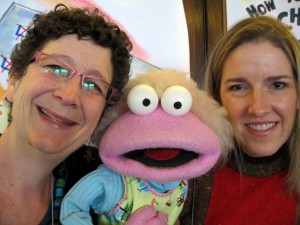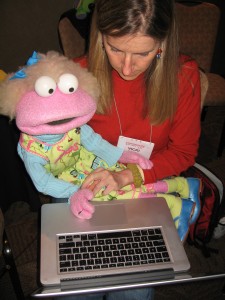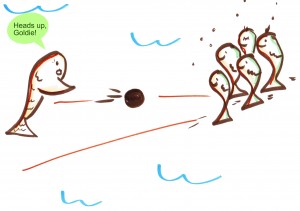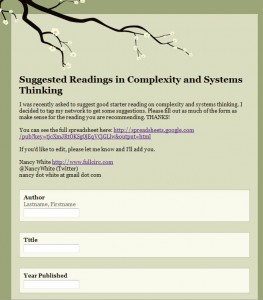 You never know what life will bring you. The trick is to say “yes,” and then hold on tight for the ride.
You never know what life will bring you. The trick is to say “yes,” and then hold on tight for the ride.
This post started in October when I was at the CommunityMatters conference. I was running a super short Twitter workshop when Vicki Eibner piped up with a challenge. She herself wasn’t so interested in using Twitter, but there was someone important in her life that might be a match. In fact, this person’s friends were pleading for updates. Suzie. Suzie is pink, with big beautiful eyes and a colorful, ever changing wardrobe. Yes, Suzie is a puppet. (She may disagree, though, so don’t be surprised.)
Suzie, it seems, has a global network that cares about what she’s up to. As a bright pink puppet, age 7 (which is, I learned, 29 in puppet years) people are drawn to her like the proverbial moths to a flame (or me to chocolate!). Suzie’s friends are online and want updates. But Vicki hadn’t crossed that threshold– not so sure she was ready to help. Her question was right in line with the close of the Twitter session – do a small, time delimited experiment with a new tool, debrief it half way and adjust, then at the end, decide what to keep doing and what to chuck out. And most important, have a purpose in mind. I offered to sit down with Vicki and Suzie and think through such an experiment and get Suzie’s account set up. All this was done in three voices, Vicki’s, mine and Suzie’s.I said, let’s do a little peer coaching session and get Suzie signed up. Vicki said, “I’ll go get her out of the car.” And so we began.
 So what do you do when you offer to teach social media to a pink puppet named Suzie? I had no idea, but an hour later, Suzie on her lap, Vicki, Suzie and I began.Suzie and I hit it off right away. A spirit of playfulness, dropping of self consciousness and some balancing of laptops and puppets and away we went.Vicki and I did the initial set up – taking care of account validation, but then we got to the interesting stuff. What does one tweet to the world? What was useful to others, to weaving a network? What was of little value or even inappropriate in the wide open medium of unprotected text?
So what do you do when you offer to teach social media to a pink puppet named Suzie? I had no idea, but an hour later, Suzie on her lap, Vicki, Suzie and I began.Suzie and I hit it off right away. A spirit of playfulness, dropping of self consciousness and some balancing of laptops and puppets and away we went.Vicki and I did the initial set up – taking care of account validation, but then we got to the interesting stuff. What does one tweet to the world? What was useful to others, to weaving a network? What was of little value or even inappropriate in the wide open medium of unprotected text?
Suzie found and added some of the people she knew into her Twitter account. We had so much fun, we actually decided to do a second session and video tape it as a simple introduction to Twitter. I can’t wait until the Orton Foundation folks can get that video up. We watched it and even at a long 15 minutes, it felt pretty fun and flew by. Who’d have “thunkit?”
As always, I walked away with learning as well. When we work for clarity, simplicity and fun, even some of the twisted bits of social media become a little clearer. Ask Suzie, she’ll tell you! Give her a Tweet. She’s been quiet on Twitter, and I think the network can use her energy!





